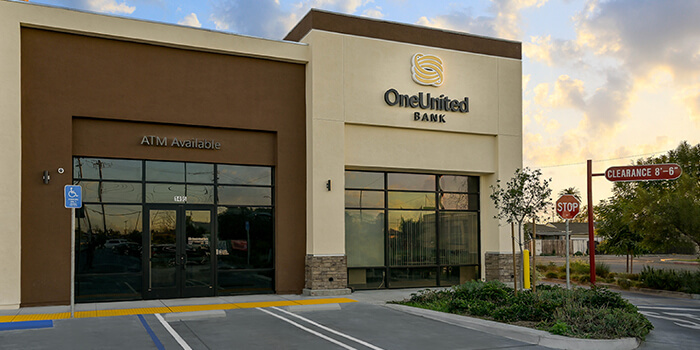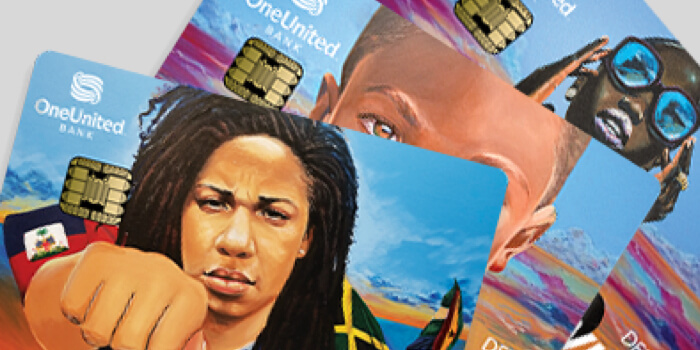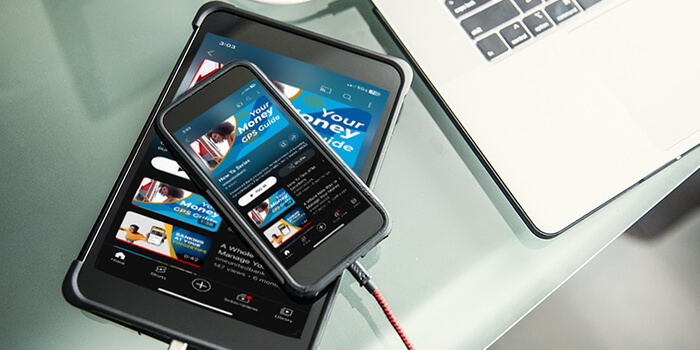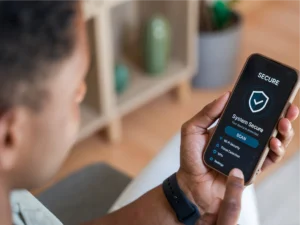Summary
Grab a friend and join us for a 30-day financial literacy challenge! It’s time to build a mindset of friendly competition—perfect for getting financially fit—but we want to know if you can keep your streak up? Challenge on!
Studies show that two powerful factors help us reach our goals: discipline and social support.
In fact, individuals who commit to a goal with someone else are 65% more likely to meet said goal, and their chances increase to 95% when they have specific accountability touchpoints with that person.
Building better financial habits isn’t just about making a goal, it’s about bringing goals to life. That’s why we created our 30-day financial literacy challenge.
All you need to do is find a challenge buddy and see who can hit their everyday streak!
Day 1-10: Movin’ and Groovin’
These first 10 days are all about getting started and building momentum.
Day 1 – Identify two financial goals for the summer—one essential, one enjoyable. Write down a small adjustment you can make this week to start funding them.
Day 2 – Say this out loud as you begin your day: “I am moving towards financial wellness with purpose and power.” Intentional thinking can strengthen financial behavior over time.
Day 3 – Create an automated transfer of $50—or a meaningful amount—each month from checking to savings. Prioritize building the habit, not the number. Go the extra mile by setting up AutoSave to round up each purchase and save the change directly in your savings account.
Day 4 – Pick a financial literacy book to read throughout the month. Avoid impulsive spending and check out a book from your local library.
Day 5 – Watch an episode of #OneTransaction where we discuss Tools to Save More and Invest Wisely. On the go? No problem! With our OneTransaction podcast—jump in hands-free to listen to the whole conversation!
Day 6 – Set a recurring calendar alert to review your budget every payday. Regular check-ins prevent drift and support long-term planning.
Day 7 – Decline one non-essential purchase today. Practicing mindful spending builds long-term discipline.
Day 8 – Take 30 minutes to complete 3 sessions under Building Financial Capability in our Financial Literacy Center. Our courses are designed to help you build your financial future!
Day 9 – Do a check in with your OneUnited Savings account and set your next savings goal for the next 3 months—whether it’s $100 or $1,000. If you completed day 2 of the challenge, you are already halfway there!
Day 10 – You hit a 10-day streak! To keep your momentum, take two minutes today to write down one money habit that’s starting to feel easier.
Day 11-20: On the Up and Up
Day 11 – Take a look at your monthly expenses and separate them into Love / Like / Leave lists. This exercise pushes you to think deeply about what truly matters versus what you can live without.
Day 12 – Check your credit score today. Monitoring your score regularly helps you catch errors early and track credit improvement. You can obtain a free copy of your report each year from the 3 major credit agencies.
Day 13 – Try a 24-hour no-spend day. Reflect on any spending urges and patterns you may want to change that arose during the day.
Day 14 – Review your most recent bank statement and highlight any impulse purchases. Use this as an opportunity to understand your spending triggers.
Day 15 – Automate three bill payments with Bill Payment and reduce your risk of late payment fees.
Day 16 – Now that you are more than halfway through our 30-day financial literacy challenge, share your experience and challenge a friend or family member to join the competition!
Day 17 – Write down one thing you’re proud of in how you’ve handled money recently. Recognizing growth helps reinforce positive habits.
Day 18 – Brainstorm three income ideas or side hustles you could realistically try. Earning more is a powerful complement to saving.
Day 19 – Plan one home-cooked meal to replace takeout this week. Direct those saved dollars toward your savings or debt repayment.
Day 20 – Congratulations on your 20-day streak! Your consistency is paying off. Text your accountability partner about a financial win—big or small. Sharing progress keeps you connected and motivated.
Day 21-30: The Final Leg
Day 21 – Think of one money value—like generosity, stability, or independence—you want to pass on. Your values guide your financial decisions just as much as numbers do.
Day 22 – Write down one specific, achievable retirement savings goal for the next 3 months. For example: “Save an extra $100 for retirement.”
Day 23 – History lesson! In honor of Caribbean-American Heritage Month this June, read up on how a Barbadian American by the name of Shirley Chisholm ran for President as the first Black major-party candidate and first woman candidate for the Democratic Party.
Day 24 – Use only cash for your purchases today—no cards, no payment apps. Notice how spending physical money changes the way you think about the transaction.
Day 25 – Create your Financial First Aid Kit. Write down or securely store the login info for your bank accounts, credit cards, insurance, and emergency contacts in one safe place—digital or physical. Preparation is financial protection.
Day 26 – Are you emergency prepared? If you don’t have an emergency fund, today is the day to create one. Life tends to throw us many unexpected curveballs, so it pays to be ready!
Day 27 – Try another 24-hour no-spend day. Notice what you truly need versus what’s just a want.
Day 28 – Time for a digital clean-up. Organize your finance-related emails, unsubscribe from one retailer or brand that triggers impulse spending, and reclaim your inbox (and your budget).
Day 29 – Schedule a financial check-in for 3 months from now with your challenge buddy. Put a 30-minute meeting on your calendar to review your budget, savings goals, and credit—treat it like a doctor’s appointment for your money!
Day 30 – You did it—30 days strong! Today, take 10 minutes to reflect and ask these questions: What did you learn? What felt easy? What surprised you?
Conclusion
This challenge is designed to help you work towards your financial goals daily, without feeling overwhelmed. Some days ask for reflection while others encourage action, but each one nudges you forward.
Whether you’re brand new to financial planning or just need to re-center, after hitting 30 days, you will feel a shift in your perspective and financial purpose.
So, grab a friend, start your streak, and let’s turn each day into an opportunity to shift our money mindset!


















